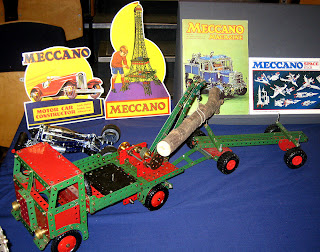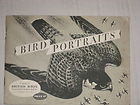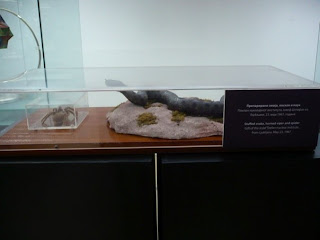This book by Mark Doty is subtitled on objects and intimacy. It is a wonderful rumination on the subject. There are many things I could say here about the beautiful poetic yet simple language or the art historical insights into still life painting, the lovely and sometimes moving personal anecdotes... But I'd rather you read the book to discover those things for yourself - a treat in store... I'm going to focus here mainly on Doty's ideas about objects and collections as is relevant to museeme. In many ways rather than a review, this is a mini essay inspired by the book.
However whilst I do not want to dwell too much on the art historical side of this book, it is just wrong to start any writing on it without mentioning still life painting, or in particular "Still Life with Oysters and Lemon" painted in the 17th century by Jan Devidsz de Heem in Antwerp. At the start of the book Doty tells of how he fell in love with this painting, and how this is a possible emotion as a painting can affect all the moments around it. A painting can be an atmosphere. Everything within a painting can be transformed into feeling. This is particularly interesting when thinking of still lifes as they are of simple objects. Therefore something that seems to hold no deeper level - a simple depiction of objects can actually hold a vast depth of feeling and emotion - a still life thinks through objects, suggesting knowledge can be found in these everyday things. A still life infuses ordinary things with an infinite well of meaning. Yes we might not know what the painter intended or who owned the objects in the painting, but that doesn't stop us finding an emotion or meaning in it - of wondering about its stories. A few pages later Doty talks of how a painting has a magnetic pull similar to the resonance of strings. How painting turns objects into words waiting to be spoken. For me this triggers a lovely image of objects breathing words out of the painting like echoes - ectoplasm wisps of uncertain yet no less powerful human history.
As I read this book I made notes and now am painfully aware of how woefully inaccurate they are in terms of creating a coherent piece. So I will write this almost as a list of Doty's ideas and my reflections on objects and meaning - like a wisp or hint of an idea story in itself. I think to write too clinical a "review" of this book is to belittle its depth of meaning in a way - I will just seek to draw it out a little...
Doty suggests that the language of ideas is in itself a phantom language. I think by this he means that in reality for real meaning language is anchored in the physical world. That is not to belittle the abstract, but more maybe I would argue there is no true abstract - we are incapable as humans of truly communicating without the things around us. Doty says we are instructed by objects - they are containers of feeling, experience, memory and time. He then goes on to explain by telling a story about visiting his grandmother and going to look for bears in the mountain. This whole stream of memories is contained for him in a particular swirled peppermint sweet. I personally have no memories triggered by said sweets (though bizarrely now maybe I have absorbed Doty's - maybe now every time I see such a sweet I will think of grandmothers and bears in Tennessee...), but it got me thinking about whether there can ever be an "empty" object - can an object only ever be devoid of extra meaning if it has never been seen, which is mostly impossible when one thinks that so many objects are man made? They would at least have been seen by their creator who would have their own memories of making said object. Therefore as we go through life we are surrounded by things full of the meanings of others - we make our way through an invisible soup of meaning - of other people's memories that increases rather than depletes with time. I spent a part of this morning in charity shops in Plymouth and having spent yesterday reading Doty I could not see anything as what it simply physically was - everything was thick with stories. This wasn't an entirely new feeling for me - I'm obsessed with hidden histories and have always loved second hand things precisely because I like the idea that they have these previous lives - but I did feel a new intensity to it today. Or almost a new poignancy... Each shelf was like an abandoned sculptural still life - I felt myself feeling sorry for the things no one wanted any more that being so commonplace and shabby in many cases might end up being simply thrown away.
But I digress a little. Doty argues that objects, such as those belonging to his grandmother whose story and memory in turn were triggered by the peppermint's memory, are made poignant by distance and time. Something you only noticed as a child has a meaning that is different as an adult. For me it grows - almost like a tree with its rings for each year - we can tell the weather and any big natural event that happened - Doty's way of seeing his grandmother's objects are similar for me - they expand in circles of meaning till it almost seems bizarre that something could be just a sweet or a floral dress. Surely they have to be more - have some way of showing physically how they have morphed? But no - meaning is both visible in the mind and invisible to the naked eye. Having just innocently used the term naked eye here that too triggered an idea - perhaps we could see these memories as the eye's clothes - that no one can see objects from their own lives with a naked eye? This is where the layers, the rings, lie. Doty says that if he laid out these objects on a table it would be like a memory museum. I love this idea. It's like a table of ordinaries rather than a cabinet of curiosities, but in my opinion it would be no less curated. It would just be that they were curated for personal memories rather than personal feelings of curiosity. I would argue that in this way we inadvertently curate a lot around us - shelves and dressing tables - any surface where we innocently put stuff. In the future those objects in that combination could be infused with a meaning we would have never presupposed.
"The heart is a repository of vanished things." I loved this line - it felt like the first line of a poem to me. But what I also loved here and Doty notes, is that yes this line is true, but also if these things have vanished to us, that doesn't mean that they are not out there somewhere continuing their accumulation of meaning with other people's lives. There is a poignancy to the personal loss of objects, indeed it is the heart not the mind that Doty says is the repository, but for me there is also an implicit hope - almost like a child leaving home there is the excitement of what might be waiting for them. This ties in with how I've always felt about second hand things.
Doty quotes the poet Cavafy who writes about visiting a room that he once spent a lot of time in with a lover that has now changed. He says "They must still be around somewhere, those old things." Doty points out how that by visiting rooms we have once been in and imagining them how they were we are almost giving them back their bodies. That the objects in them at a certain time were what made this room what it truly was and that it has changed. Yet he says there is a wistful adult acceptance in this poem that things must go on without us, again almost suggesting that these objects have been let go for a new life. But where have they gone?
Doty comes on to talk about auctions as a redistribution of objects, and therefore I would argue, memories. He says he particularly likes yard sales as this is where the histories of objects are their most palpable. I would also say that this urge to buy second hand has something to do about how this gives objects personalities. He talks of liking a particular plate with a chip out of it as he can wonder how it got it. For me it is like being through so many owners builds character. I have always found it strange when speaking to people who don't like second hand things. Maybe they are aware of this history even if they dismiss it as nonsense and it makes them feel uncomfortable? But I have always loved owning something unique even if it is only made so by its flaws, people I love have flaws - it's what makes them unique - you wouldn't want to hang out with someone who was the human equivalent of the IKEA catalogue so why would you fill your house with it? I feel there is a strength in old second hand things - a reassurance that they have been through things. They help me out in some way going through hard times - this reassurance is a pleasure. A nourisher. Old things are nurturing to me. Life isn't clinical so why try to make it so?
Doty sees people who attend auctions as a tribe who understand that they are curators of objects - objects that could outlast us. I find that interesting. Museum curators think all the time about age and preserving things for future generations, but we rarely think about our mortality in relation to things we own. You might be outlived by that horrid Primark frock so you might as well preserve something old and beautiful. I don't mind being outlived by a '30s ballgown or a beautiful painting. Good jewellery and antiques have always been seen as heirlooms. I like how it gives the activity of going to a yardsale the feel of an important mission knowing that you might be rescuing something that might have been precious to someone in the past, and could be even more so to someone after you're dead. It's comforting rather than morbid. And it is a curation. Does that make a yardsale a transient museum - a museum takeaway - a travelling exhibition of personal history? He also talks of how objects can have a personal collective memory that I almost see as heriditary - he is drawn to things because his mother liked them for example. We are searching for specific memories, in the same way as we might be on the look out for a specific type of art deco desk.
Doty talks about our houses being like our biographies. For me this links with Proust, and Doty frequently mentions Bachelard's "The Poetics of Space", but they are both works I love and I think everyone should read, but I'm not going to dwell on now. I am going to think more of the objects in our homes. Doty talks at the end of his attic being so crammed that he knows the stuff is there, but how whilst each individual piece has meaning, en mass it can become overwhelming or even shameful. I guess this is where we touch on hoarding - unhealthy attachment to objects. But what I love here is how he describes his attic as almost paleontological. It has strata - one could excavate it. Go on a dig for memories, which is something that certainly comes up in my poetry book The City I have written with Ana Seferovic.
But rather than ending on how objects can overwhelm us I would take us back to the still life. Like an attic of memories, the painter can only render what can be seen yet there is so much more there. Yes all of our senses are arriving via the gates of our eyes, but there is still more. For Doty this leads to the conclusion of the soulfulness of objects. That there is something about them that is akin to a spirit or a soul. People talk of the body as an empty vessel and if objects are vessels filled with memories, than surely they are soulful? But what is interesting to me is how these souls are given to them by humans not an all powerful deity. These ordinary objects are given souls by ordinary people. By us. And for me this gives them something that is more powerful than a religious relic we are told has a certain meaning. We create the meanings of ordinary things through a collective giving of memories - it is personal and unknowable and altruisitic. It is a gift that everyone will during their lives give. It is our invisible epitaph.
I could say more and I have gone off topic and left out so much. I urge you to buy this book here .

































































